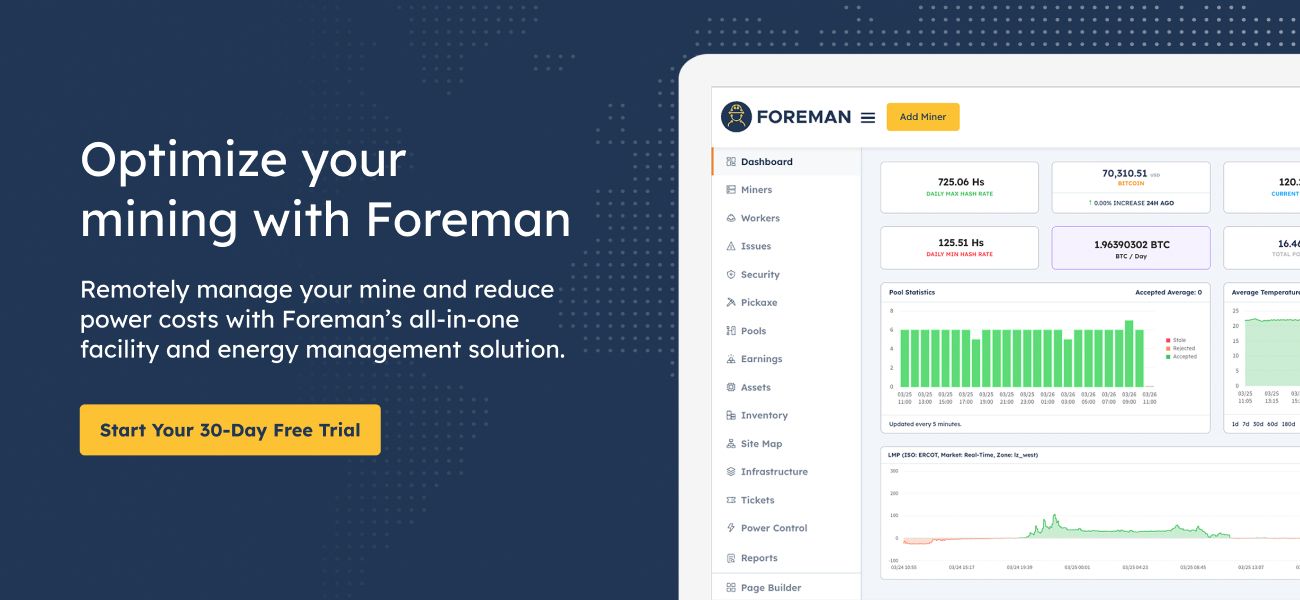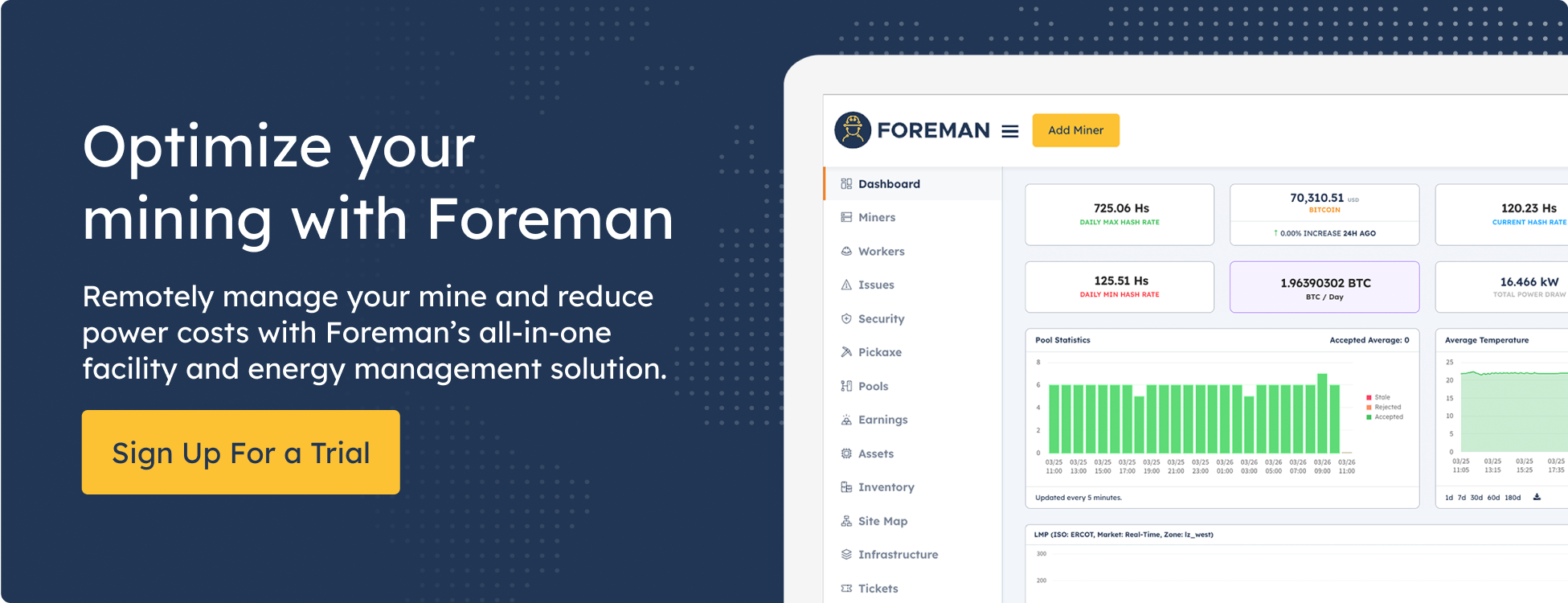When running a bitcoin mine, few places are more suitable than Texas. The electricity market deregulation is aligned with much of the free market attitude that accompanies Bitcoin, attracting more aligned actors. Not only is Texas welcoming to Bitcoin miners, but it is also one of, if not ‘THE’ energy capital of the United States.
The Electric Reliability Council of Texas (ERCOT) is building a one-of-a-kind power market in the US, and with that comes some rules to keep it organized. This article will clarify these rules and explain how to navigate ERCOT, giving a better understanding of the grid operations and programs.
Specifically, we will analyze Non-Spinning Reserves as a Non-Controllable Load Resource (NCLR), highlighting why someone might choose this program based on limits and capabilities. When people think of ERCOT Demand Response, they usually think CLR, but NCLR + Non-Spinning Reserves is a lesser-known program that paid out more in 2022. The article will go more in-depth on this subject in the analysis section below.
By breaking down the technical jargon and explaining the requirements and benefits of various demand response programs, this article outlines the options available to mining operations within the ERCOT power market.
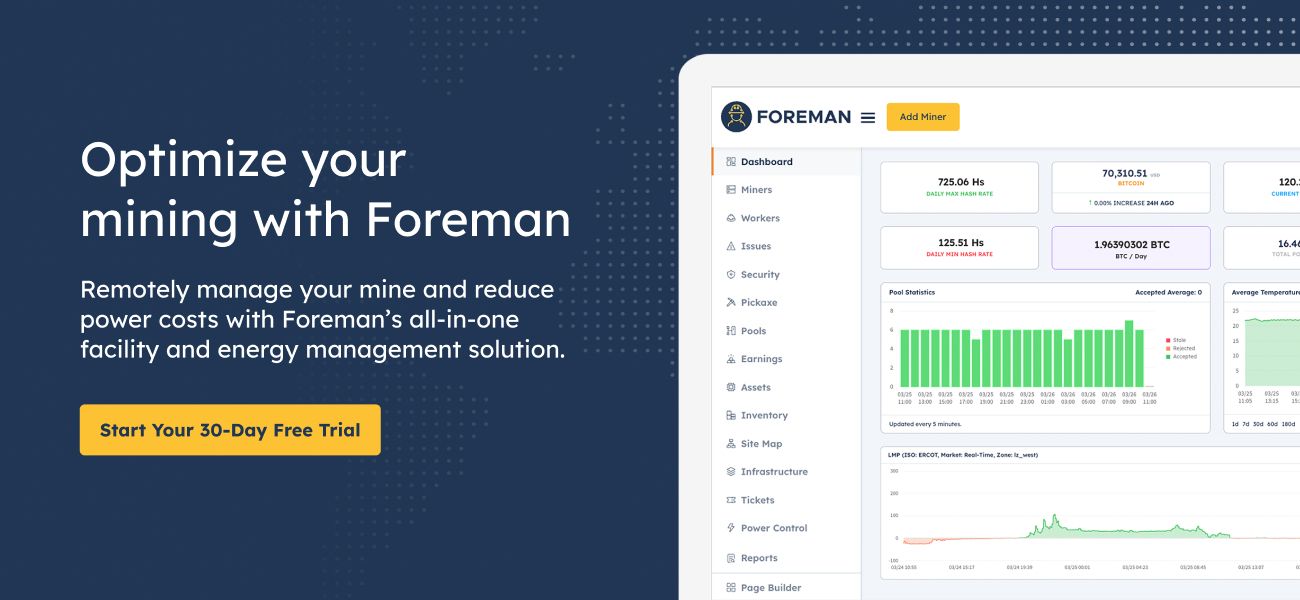
If you'd like to simplify Demand Response and let Foreman and our partners do the work, contact us here or sign up for Facility Management Software.
Introduction to ERCOT
In the United States, most power grids are managed by Independent System Operators (ISOs) that maintain reliability through mechanisms that set prices at specific locations on the grid based on offers from the various Resources connected to the system. They also manage reliability through “Ancillary Services” that aid in system recovery should an event occur, such as a Resource suddenly shutting down, but more on this later. Inside these ISOs are utilities that are monopolies managed by “regulators” in each state, as well as the Federal Energy Regulatory Commission (FERC). FERC ensures that the markets managed by the ISOs outside ERCOT and the regulated entities maintain open access to the grid and fair trade in the markets.
ERCOT is the only unregulated power market in the United States that is not regulated by the federal government and allows consumers to choose their electricity provider. As an ISO, ERCOT operates within Texas and is not subject to federal oversight. A board of directors in ERCOT sets regulations, and transactions between electricity providers and power generators are managed using free market mechanisms. The Public Utility Commission of Texas (PUCT) has a role similar to that of FERC in other jurisdictions and ensures open access to the ERCOT market.
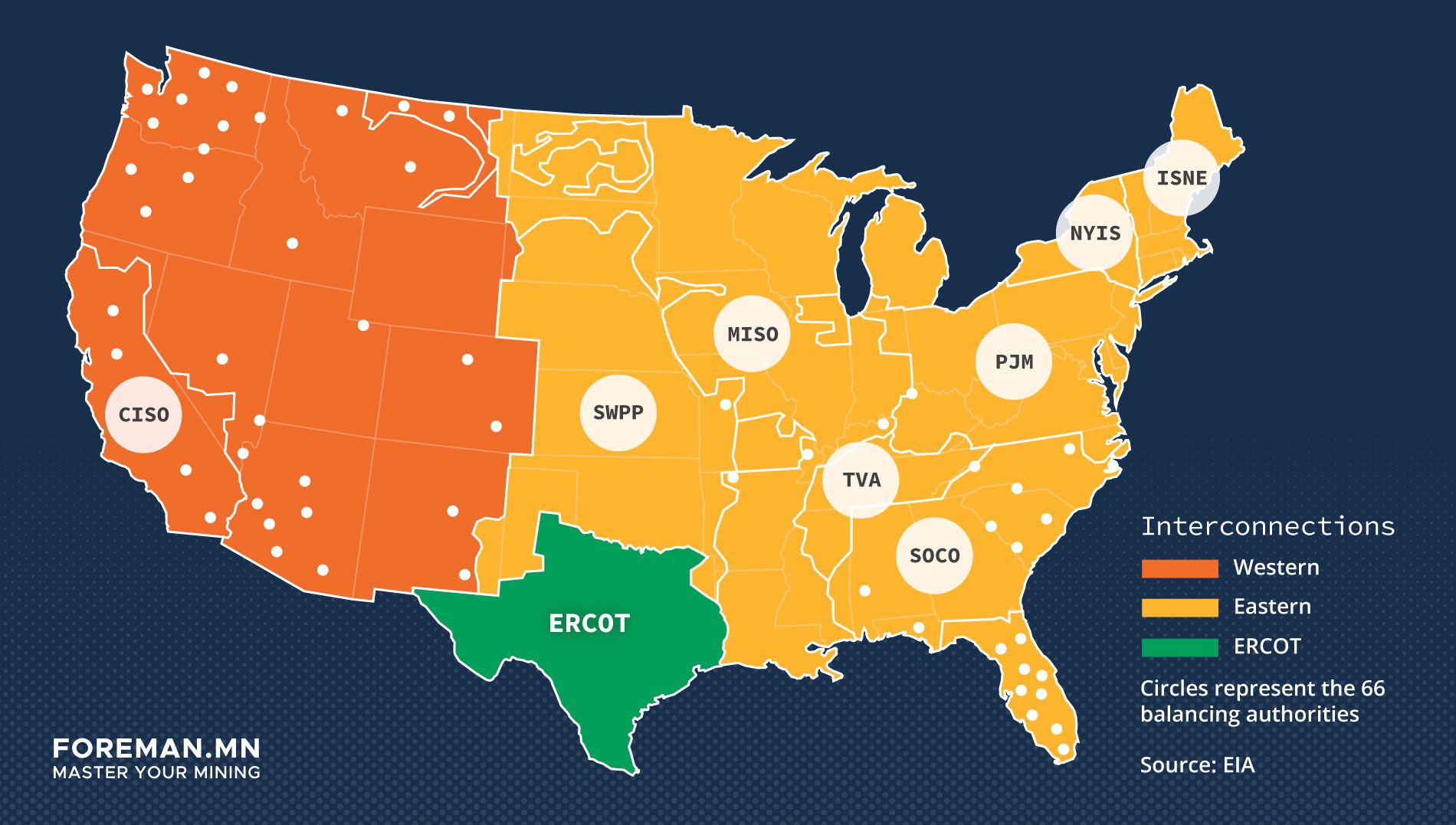
CLR vs. NCLR
In ERCOT, entities participating in Demand Response are known as Load Resources (LR). Load Resources are divided into two categories: Controllable Load Resource (CLR) and Non-Controlable Load Resource (NCLR). Specifically, CLR or NCLR is not a program but a designation by ERCOT. When applying to become a Load Resource in ERCOT’s Demand Response program, candidates can choose their preferred specific designation.
When someone signs up to participate in Demand Response, they are self-designated either as a CLR or an NCLR.
CLR provides quick response times from 5-minute responses to under a minute. CLRs must react fast to emergency events or conditions independent of ERCOT. ERCOT lists technical and strict requirements that CLRs must qualify for, like frequency response and ramp-up/down times. Each response time requirement is specific to the Ancillary Service, which we will discuss in the next section.
NCLR can perform manual deployments with a slower response and ramp time, usually between 15 and 30 min depending on the program. NCLR and CLR have specific advantages and disadvantages because of these differences in rules.
Ancillary Services
An Ancillary Service is a backup or reserve power resource that can be used in case of an outage or other disruption to the main power grid and can be provided by both Generation and Load Resources. Load Resources are a subset of Demand Response activities that provide additional power back to the grid in times of need as the load reduces its power consumption. Resources can enroll in various programs within the Ancillary Service subset to contribute power to the grid. The programs tailored to the specific type and power capacity ensure that the grid has access to the resources it needs to keep humming along smoothly.
The definition of an ancillary is to provide secondary or reserve power in the case of downed systems. In Foreman’s Demand Response article, we touched on Peaker Plants, designated as ancillary/backup power requiring a much higher cost to spin up.
With Bitcoin miners utilizing Demand Response, electricity can become dynamically available by efficient, already-funded plants and provide relief to a distressed grid at a fraction of the cost and time of peaker plants. This mechanism taps into the power of the free market grid in combination with Bitcoin mining.
Ancillary Services and other Load Resource programs include:
- Responsive Reserve Service (RRS)
- Non-Spinning Reserves (NSRS)
- 4 Coincident Peak (4CP)
- Emergency Response Services (ERS)
- Voluntary Load Response
Responsive Reserve Service (RRS)
When people think of “Demand Response,” they think of CLRs in the Responsive Reserve Service (RRS) program. But it is also possible for NCLR to perform RRS.
When there is a significant frequency decay or drop in electricity relative to the demand, the Responsive Reserve Service arrests the frequency decay. It returns the frequency to its normal levels. RRS can be performed manually by both generation and load resources, and in the case of NCLR, can be actuated automatically through under-frequency relay control.
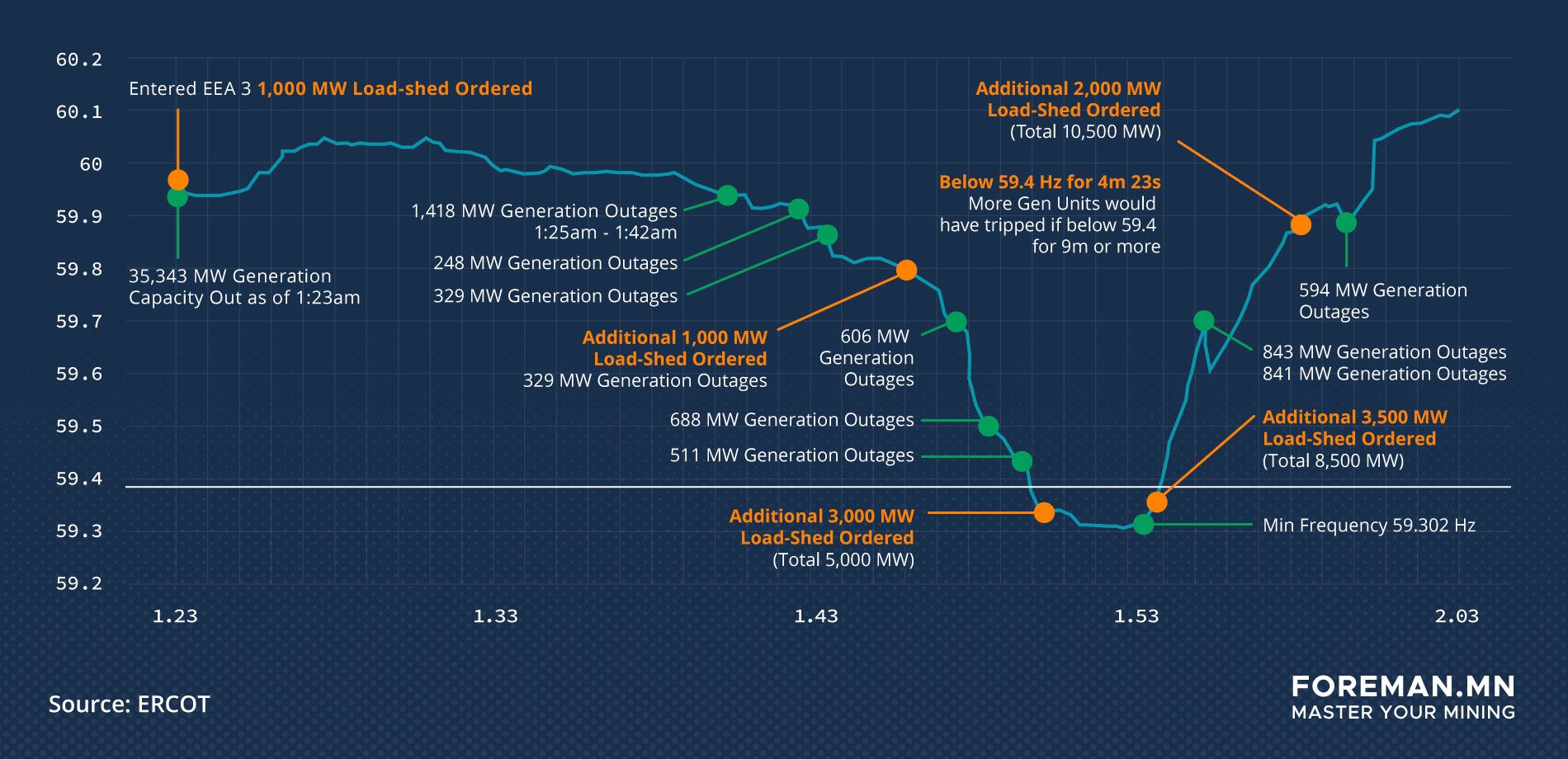
ERCOT also creates a buffer between expected and deployed MWs called “offers” and “awards.” The “offers” are the amount of Load Resources enrolled in the specific program. The “awards” is the number of MW awarded and deployed for Demand Response. For example, in 2021, the number of reserves got dangerously low in the winter storm of 2021, most likely because it was an unanticipated event. This buffer is provided throughout the Ancillary Services in ERCOT.
Non-Spinning Reserves (NSRS)
Non-spinning reserves are a lesser-known but equally important demand response program. For ERCOT specifically, Non-spinning Reserves need to be available between 10 and 30 minutes for response and, depending on the Load Resource type, sometimes as long as 2 hours. “Non-spin” refers to a generator that may be on standby, waiting to “spin up” and provide power to the grid. This can also refer to excess power from consumers with a Power Purchase Agreement.
In October 2021, NPRR1093 was approved, with an effective date of May 2022. NPRR1093 allowed the use of NCLR to participate in Non-Spinning Reserves. As a result of increases to this service brought on by Winter Storm Uri and ERCOT’s subsequent “Conservative Operation Plan,” Non-Spinning Reserves have paid more than CLR using Responsive Reserves in 2022 simply because the market has not yet adapted to the new implementation.
4 Coincidence Peaks (4CP)
In ERCOT, the requirement to pay for the transmission system is set on the four system-wide peak intervals in June, July, August, and September. Thus, loads not consumed during those intervals will not be required to pay transmission costs for the next year for the amount of the load they reduced. During periods that represent the peak, participants should anticipate shutting down for at least one 15-minute interval to avoid the transmission allocation.
Emergency Resource Services (ERS)
ERCOT implemented this program to reduce system demand in times of emergency. It decreases the chance of systemwide load shedding (rolling blackouts) during emergency events through Demand Response. ERCOT will signal for two different response times, ERS-30 (30 minutes) and ERS-10 (10 minutes).
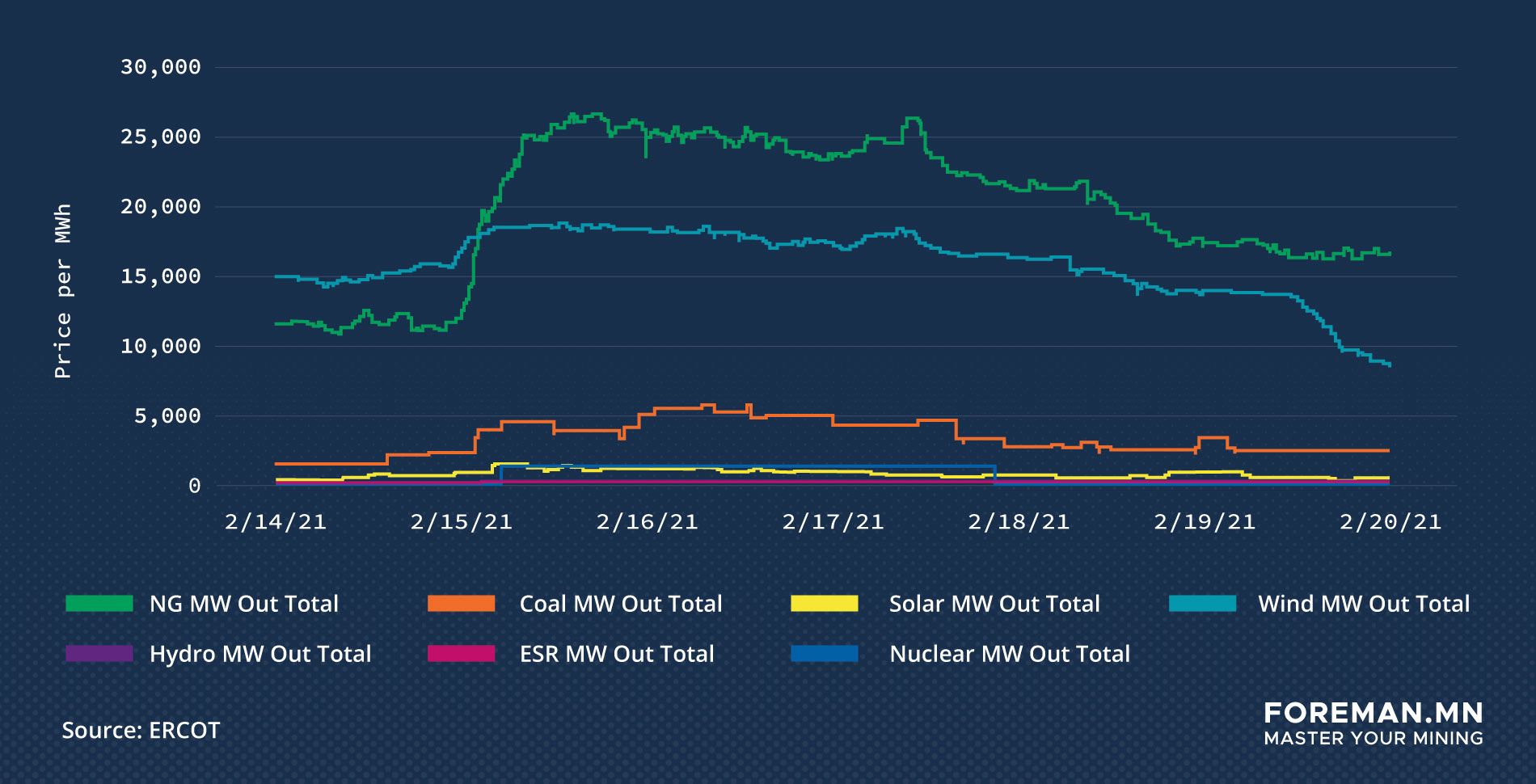
Voluntary Load Response
Customers can also opt into Voluntary Load Response, where Load Resources curtail when energy prices in ERCOT rise to a level where production is no longer profitable. One way is for the load to sign an electricity contract with a Load Serving Entity (LSE). Depending on how the agreement is structured, there may be opportunities to curtail during peak demand. This would be closer to peak shaving, where high prices in electricity can be avoided and sold back through curtailing during peak price, receiving credits or payment in return from the purchasing entity.
Cost Savings Analysis of Programs
To qualify for specific programs, miners need to be able to perform particular tasks in a designated time frame. Although many mining machines can spin up and down relatively quickly, some programs lend themselves better to specific mining machine manufacturer specs.
NCLR + Non-Spin vs. CLR + Responsive Reserves
In ERCOT, when people think of Demand Response, they usually think of Controllable Load Resource (CLR), not NCLR.
Specifically, if you want to register as a CLR, you need to perform ramp-up speeds that satisfy ERCOT and the requirements, and some miners will not meet those requirements. For example, newer generation Avalon miners can ramp down quickly, but ramping up takes upwards of 15 min, and when the window is 5 min for a CLR, you will not meet the requirements for Responsive Reserves.
But what if your machines cannot function at the quick and responsive level CLR demands?
For NCLR programs, miners have a window of 30 minutes, up to an hour, making it possible for them to perform in the Non-Spinning Reserves category.
In 2022, ERCOT paid more through Demand Response (gross) for NCLR in Non-Spinning Reserves than for Responsive Reserves as a CLR, according to multiple CSPs. The higher payment has much to do with NCLR now being available to run in the Non-Spinning Reserves program with less competition. This premium will likely subside and come back down to market pricing but could continue through 2023.
$/MW-year refers to the cost savings an electricity consumer can save in 12 months. So if you had a $50,000 $/MW-year cost savings at a 1 MW facility, the customer would theoretically save around $50,000 over the course of a year.
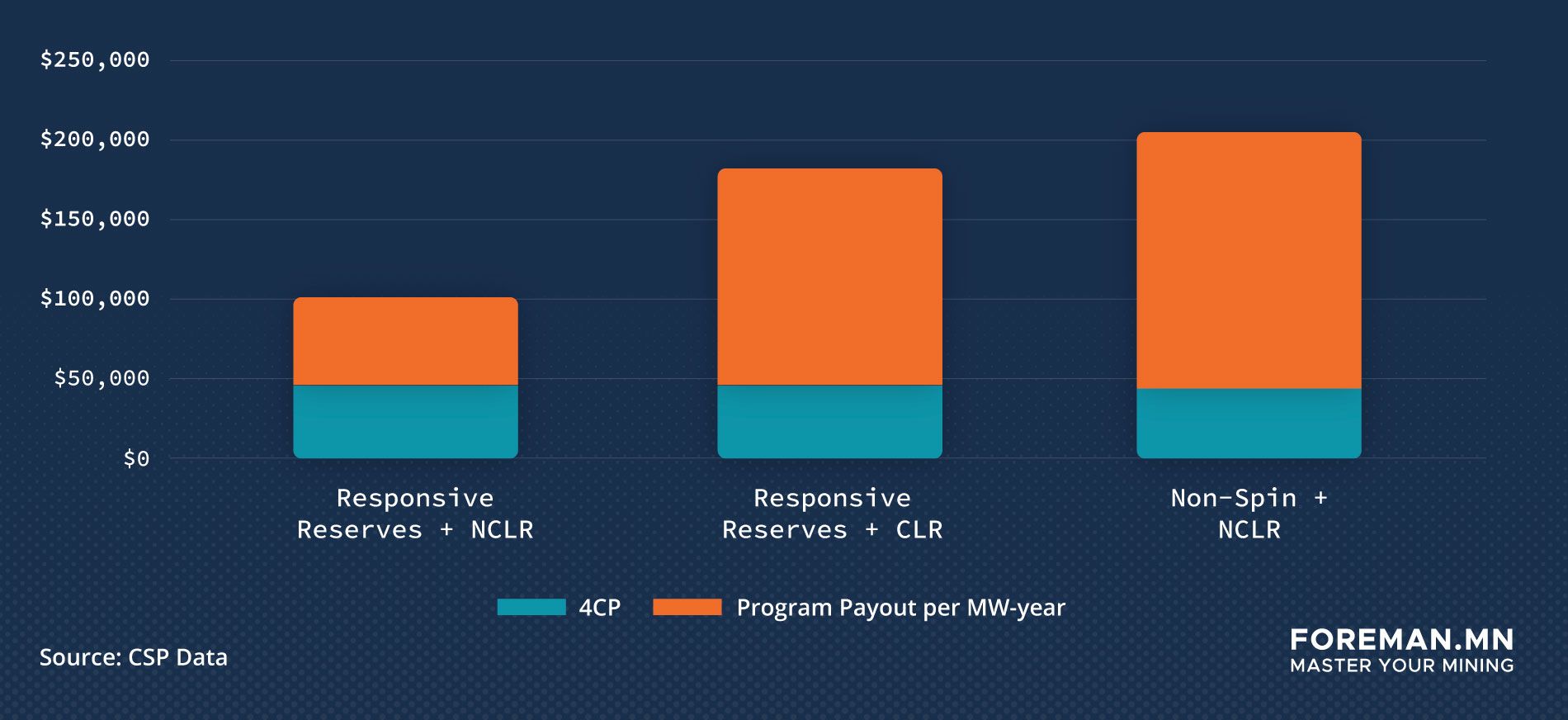
It is hard to say exactly what the coming year will look like in ERCOT, but as energy prices continue to rise, DR will likely increase as well. Within ERCOT, there are many ways to provide Demand Response, and 4 Coincident Peak is only one of many programs that can stack, providing higher payout in companies $/MW year. Some CSPs are estimated upwards of $300k per MW-year with additionally stacked programs. As a caveat to the graph above, 4CP is a combination of ‘Cost Avoided,’ while RRS and NSRS are both ‘Services Rendered and Paid.’
“4CP numbers assume the load operates only during those hours and that actual operation may require additional hours of downtime to ensure hitting all 4. June and Sep are usually easy, but July and especially Aug. pose challenges.” - Clayton Greer
Management Software Enables New Demand Response Capabilities
Demand Response programs can change throughout the year. Regardless of where a mine is located, Foreman can provide fully automated, dynamic curtailment in all areas of the United States, especially ERCOT. Our Facility Management Software is programmed to work for you, providing ramp-up and ramp-down speed and agility to optimize your Demand Response revenue.
If you are interested in learning more about the additional capabilities Foreman can add to your mine, contact us to learn more.
